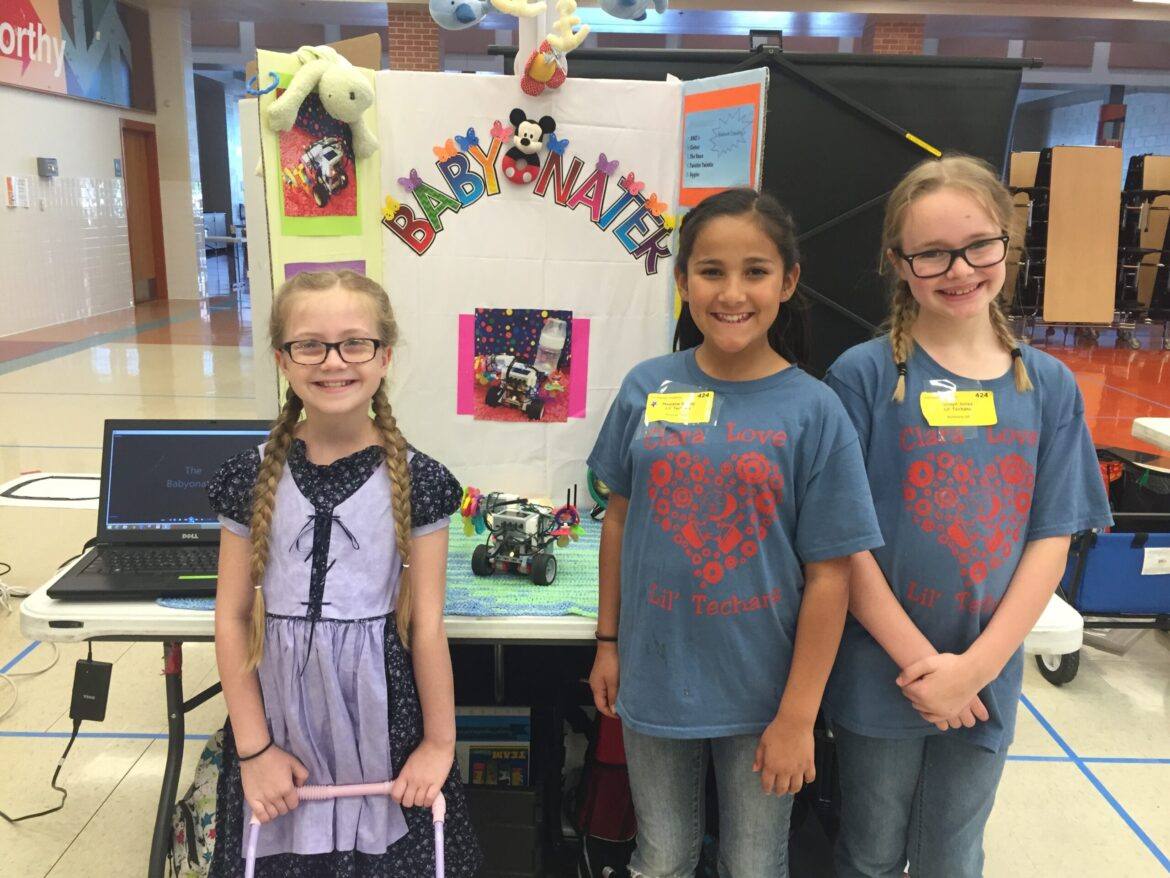It’s 7 a.m. and the sun peeks over the horizon as hundreds of students funnel into the halls of Del Valle High School. It’s an unusual sight, at least on a Saturday.
But these students have already made unusual trips, some traveling from the far corners of the state and beyond— Texarkana, the Rio Grande Valley, and far west Texas, even the overseas U.S. territory of Guam, to name a few — to this high school just east of Austin in order to show off their robots at the 2019 State Robotics Contest, organized by TCEA.
If that feels like a momentous event, it’s because it’s the culmination of months of work, from designing complex LEGO-brick bots, to building and programming them, and even conducting background research and developing marketing plans.
Robotics Rules
Students at the state robotic contest compete in teams of two to four, and these teams are split into four categories: Advanced and Intermediate Arena, which pit a team-built robot against a common task-based obstacle course, and Advanced and Intermediate Invention, in which custom robots are designed specifically to solve a unique problem of the team’s choosing.
The groups at state, in both the Invention and Arena contests, represent the top teams from 20 area contests across the state. And as teams begin checking in, decked in uniforms that run from bow ties and suspenders to lab coats to soccer jerseys and t-shirts, it begins to feel something like an academic track meet. Concession stands are setting up, and in the parking lot, a massive grill is fired up to supply the concessions.
Teams like The Fast and the Curious, West Texas Gold, and the EHS Cowbots earned their way to State by placing first or second in their area, or by securing a wild card spot. They join teams like The Chicken Nuggets, Des-BOT-cito, and simply Jeff.
As the morning rolls on and the robots begin to roll across linoleum and parquet floors, two distinct, challenging competitions get underway.
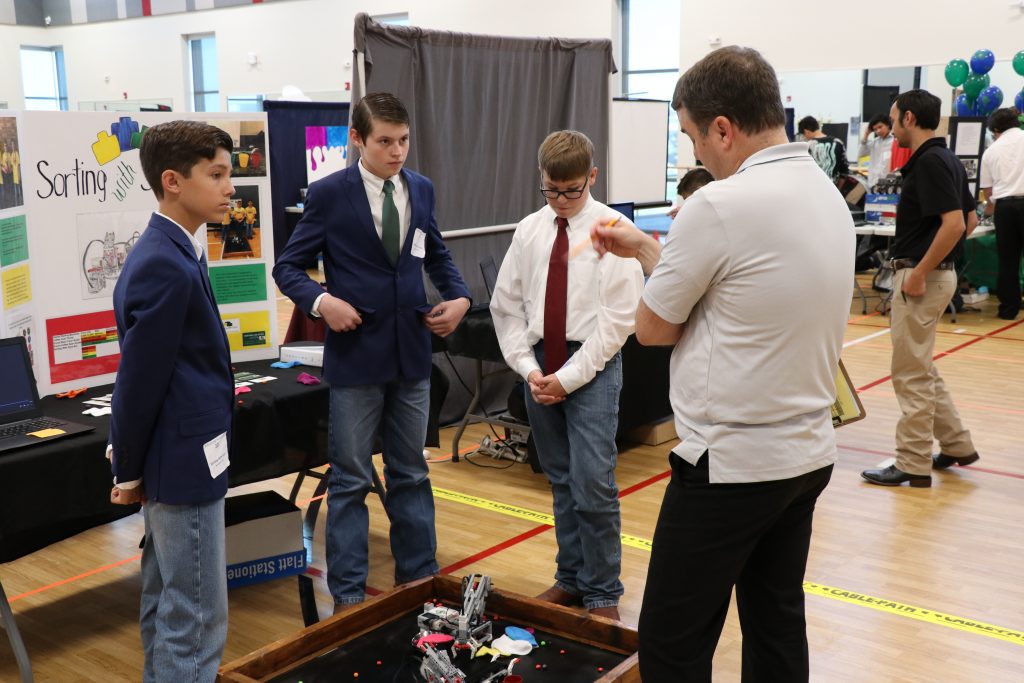
Programming Solutions
The Inventions contest might be described as part science fair and part “Shark Tank,” with each team determining problems and designing robotic solutions, then pitching those solutions to three different judges. What’s more, they develop their presentations, promotional materials, and marketing ideas based on extensive research. Each team proudly displays a binder stuffed with charts, graphs, and blueprints. As judges move from station to station, the teams explain their ideas in well-rehearsed presentations, though they also respond off the cuff to questions posed by the judges.
Evelyn and Danielle call themselves The Time Teens, and they bring an ambitious machine, which they’ve hauled all the way from Edinburg, a 300-mile trip, to the Advanced Invention competition. They’ve designed a robot meant not only to exercise the minds of Alzheimer’s patients, but their bodies as well. Their time machine is like an exercise bike, the robotic portion assisting with pedaling and controlling a screen with visions of familiar routes and a speaker with matching sounds. It’s all designed to give those living with Alzheimer’s a multi-sensory experience that can help trigger memories.
Danielle talks about their inspiration: the difficulty of having a close family member with Alzheimer’s. “It hurts to know that she can’t remember us, can’t remember growing up in Mexico,” she says. “We decided, why not help her remember?” Evelyn adds.
Inventing the Future
There are drone-like lawn mowers, robotic waiters, and robots that fold shirts, deliver medicine, and clean air ducts, all of them made of LEGO bricks, wires, and carefully collated computer code.
Hydro Wall-E, designed after the titular Pixar hero, sweeps up oceanic garbage. The FarmBot is meant to encourage home gardening and healthy eating by automating the plowing and sowing of small plots of ground. Still others are designed to fight fires, plant trees, weld pipes, feed house pets, and even improve your golf swing.
Creative use of robots to solve problems is just one part of the contest. Teams also have to conceptualize how they’ll spread the word about their potential product, and whether that product might be viable on a large scale. The entrepreneurial Invention teams hand out business cards, even display promotional yard signs and door hangers during their presentations. Some hand out surveys to the judges and visitors, encouraging feedback to help improve future designs. Not limited to today’s competition, these teams are thinking long-term.
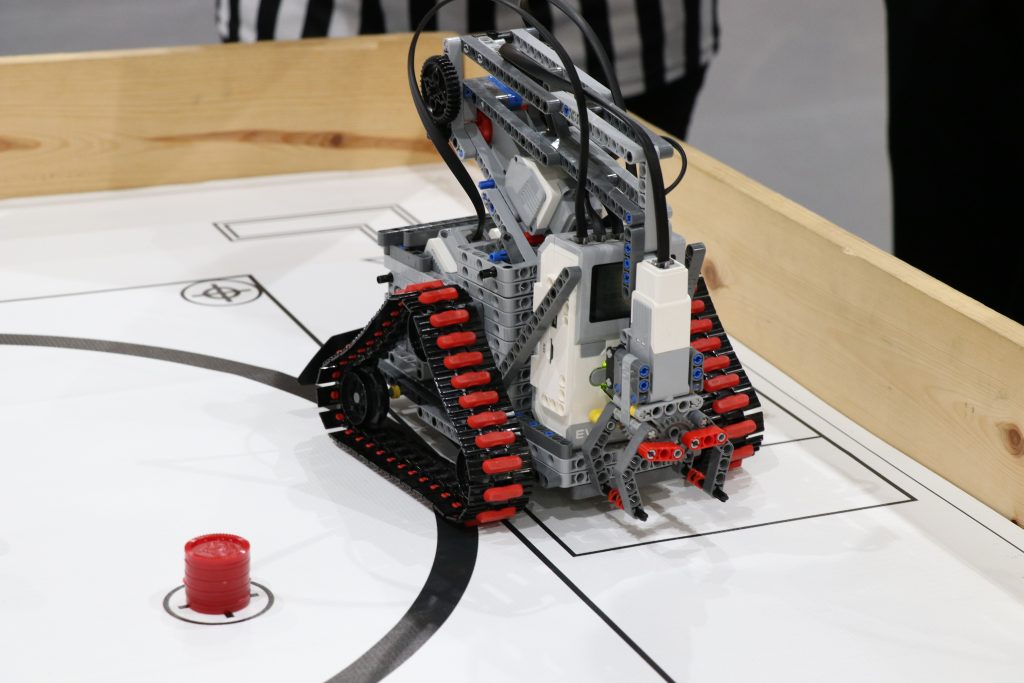
Competing for Perfection
Down the hall, in the main gym, the atmosphere is less science fair and more Friday night lights. As friends and family crowd in, judges — eschewing the staid grey polo shirt of the Invention judges for referee-style striped jerseys — pace around four-by-four foot, high-sided tables that serve as the test courses for each Arena bot.
Unlike the Inventions contest, Arena challenges are a spectator sport. As the teams file into the gym, bots in hand, the crowd begins to bubble over with applause and cheers. Brian Grenier, a TCEA board officer, and the announcer for the contest, is pacing the hardwood in the school’s main gym as he emcees the competition. He lifts a microphone to his chin and shouts “Three, two, one, LEGO!”
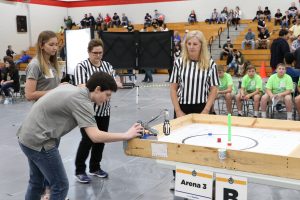 The familiar “Charge!” fanfare plays, but instead of being followed by the thud of a bouncing ball and the squeaks of gummy shoe soles, the room fills with the whirs of gears and the occasional shout as a robot gets stuck or misses a step in the complex problem set each team must attempt to complete.
The familiar “Charge!” fanfare plays, but instead of being followed by the thud of a bouncing ball and the squeaks of gummy shoe soles, the room fills with the whirs of gears and the occasional shout as a robot gets stuck or misses a step in the complex problem set each team must attempt to complete.
Each Arena team has two minutes to complete a detailed list of specific tasks, moving their robots and performing actions that are meant to mimic, for example, the automation of a factory or the sorting of recycling and garbage. Those robots are, in turn, constructed from a strictly-defined set of carefully itemized sensors and LEGO pieces.
Alex, a seventh grade student from Midland, waits for his team to be allowed into the gym. His dark eyes focus on a laptop as he makes some final coding adjustments. He’s been on his school’s team for six months, and says he joined because of his interest in programming, his main role on the team.
“Even the smallest mistakes will mess up your program,” he says, eyes still zipping across lines of code. “You have to get it perfect, almost.”
Building Brick by Brick
Reforesting woodlands or performing precise movements to mimic production on a factory floor might not seem like the most obvious use for a system of building toys. But Devin Quin of LEGO Education, official partner of TCEA, explains the logic behind it as he takes a breather in between judging Arena rounds.
The key, he notes, is accessibility and comfort. “Most folks might not think that they can program a sensor,” he says. “But they can build something out of LEGO on the fly.” In the end, the ease of accessing the LEGO system means these students have the opportunity to test their skills in coding, engineering, and even planning products and business while working in teams.
It’s an experience that often comes with a sense of accomplishment. By the end of the day, the teams, still clad in their bright uniforms, were lofting trophies, draping medals around their necks, or simply chatting with other teams about the challenges of their projects. Even on a Saturday, this school was packed with learning.
Bonus: How to Start a Robotics Team
- Determine Your Area – The contest you participate in depends on which Area you belong to. To determine your area, find out which ESC you belong to. Your area number correlates with your ESC number.
- Become a Member – The team sponsor must have an active TCEA membership for the duration of your contest season. Membership is just $49.
- Determine the Contest and Division – Students have the choice of competing in the Arena Contest or the Inventions Contest. Like apples and oranges, the two cannot really be compared.
- Contact Katie Treat to register your team for TCEA Robotics Contests: treat@tcea.org.
Want to learn more about robotics? Ready to start your own team? Check out TCEA Robotics to learn more about building STEM skills through this team-based activity.

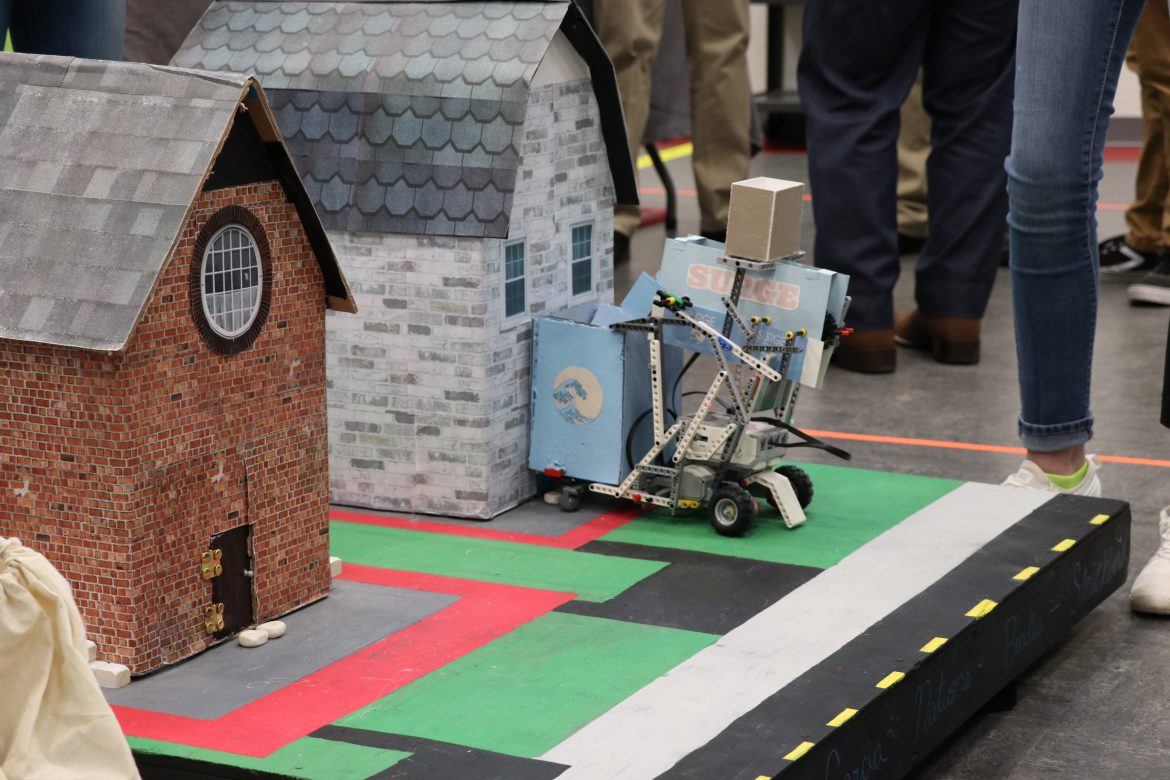
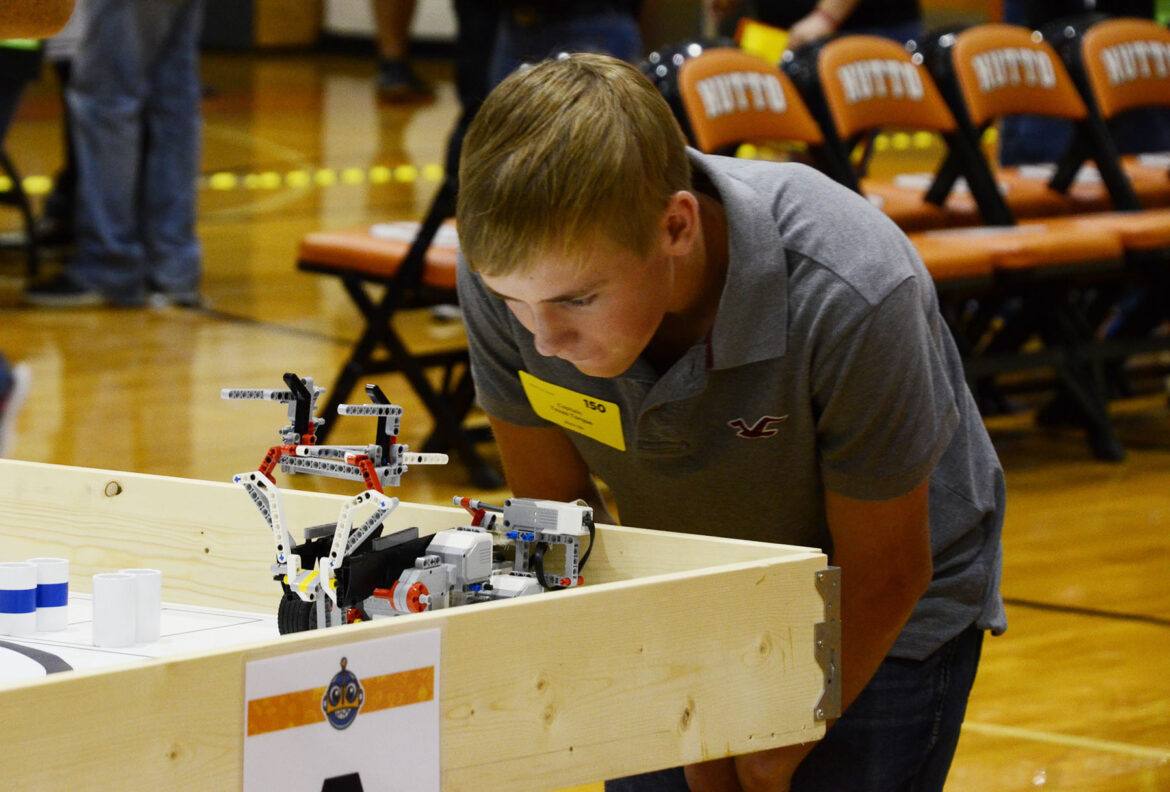
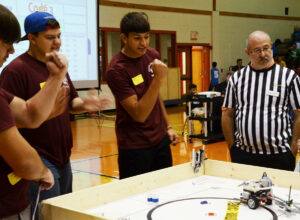 spent months preparing a solution to the competition challenge. This year’s challenge, Code 3, centers around emergency preparedness. The teams sets up their robot and gather around the arena table in anxious anticipation. The clock is set: two minutes. At the count of 3, 2, 1, LEGO…they’re off!
spent months preparing a solution to the competition challenge. This year’s challenge, Code 3, centers around emergency preparedness. The teams sets up their robot and gather around the arena table in anxious anticipation. The clock is set: two minutes. At the count of 3, 2, 1, LEGO…they’re off!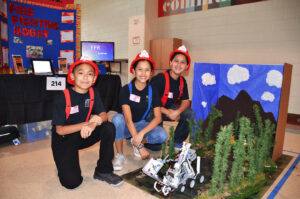 Many teams focused on ways robots could do jobs that would be d
Many teams focused on ways robots could do jobs that would be d